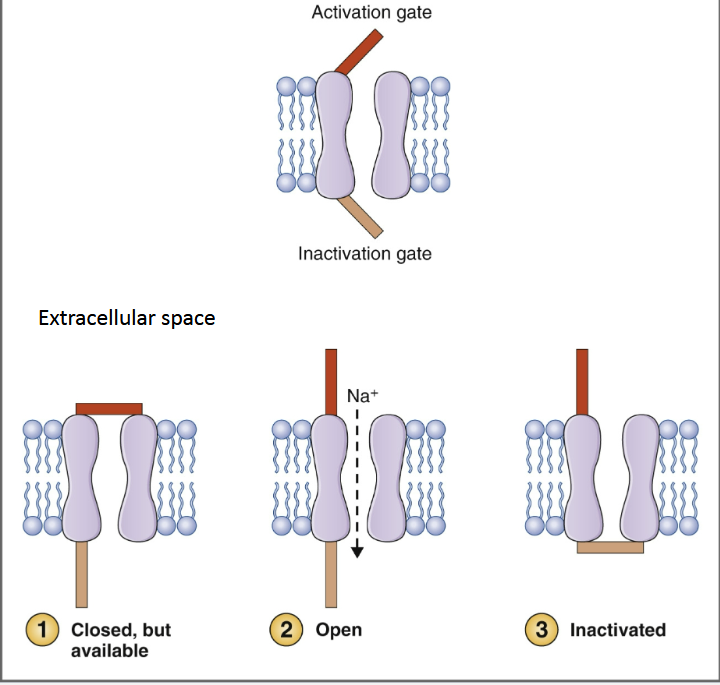Action Potential
1/7
There's no tags or description
Looks like no tags are added yet.
Name | Mastery | Learn | Test | Matching | Spaced |
|---|
No study sessions yet.
8 Terms
Define: Threshold, Depolarization, Hyperpolarization, Repolarization, Overshoot, Undershooot
Threshold: level to which the membrane must depolarize to trigger and action potential
Depolarization: When the membrane voltage becomes more positive
Repolarization: When membrane voltage is becoming more negative after having reached a “peak”
Hyperpolarization: Transient “dip” below normal Vm
Due to potassium “leak” channels
slow to open and close
Overshoot: When membrane potential is positive
Undershoot: When membrane potential is more negative than at rest
What is the relationship between Stimulus and distance?
Delay between stimulus and response (action potential) increases w/ distance
What is Spatial Summation? Temporal Summation?
Spatial summation
Two or more presynaptic inputs arrive at a post synaptic cell at the same time
EPSP-IPSP Cancelation can occur this way
Temporal summation
Two presynaptic inputs arrive at the post- synaptic cell in rapid succession
Describe the stages of Action Potential
Resting stage
Before AP
Membrane is “polarized” (-70 mV)
Potassium current out of the cell dominates
Depolarization stage
At threshold, sodium and potassium currents are equal and opposite, moving us up to threshold
Once threshold is met, many more voltage-gated sodium channels open causing rapid depolarization
Na+ conductance increase 5000x
Cell now depolarizes (+35 mV)
Repolarization stage
Na channesl close; K+ channesl open
K+ leaves through BOTH VOLTAGE GATED AND LEAKAGE CHANNELS
K+ channels = “delayed rectifier” channels because they are slow to open and close → undershoot
Return to rest:
Na-K pump pumps Na out, K in
Describe the three steps of Sodium Gate Activation
Step 1:
Closed, but available
When an AP arrives, the attendant voltage change
opens the sodium channel (voltage-gated)
Step 2:
Open (some open as we move towards threshold)
Sodium conductance increases rapidly as we
reach threshold and depolarization occurs rapidly
Step 3:
Inactivated (no more sodium current into the cell)
This plays a role in the “refractory period”

Differentiate between Absolute and Relative Refractory period. Describe the mechanism for both.
Absolute refractory period
sodium channel inactivation gate is closed → impossible to open them
Also, during this time, the membrane potential is already positive and action potential propagation can not be simulated
Relative refractory period
Occurs when potassium conductance out of cell increases
Membrane potential → more negative → Na+ channels changes status from Inactivated to Closed
now possible for AP propagation but requires a greater than normal stimulus
(T/F) In action potential, Na+ channels are stimulated first, then K+ channels are stimulated to open; Explain
False; They are both stimulated at same time. The reason why they open at separate times is because K+ voltage gated channels are slower to act then Na channels.
Where is myelin usually found? Describe why myelin increases AP propagation speed
Myelin is found in larger nerves, like the alpha-motor neurons
Increases speed due to two factors:
Provides insulation
provides resistance to electrical flow leaving the neuron → electrical flow Is always down the neuron
Saltatory conduction
the sodium channels are only at Nodes of Ranvier
Thus, the AP leaps from node to node unlike in unmyelonated cells where it is limited by the speed with which the impulse can spread from channel to channel